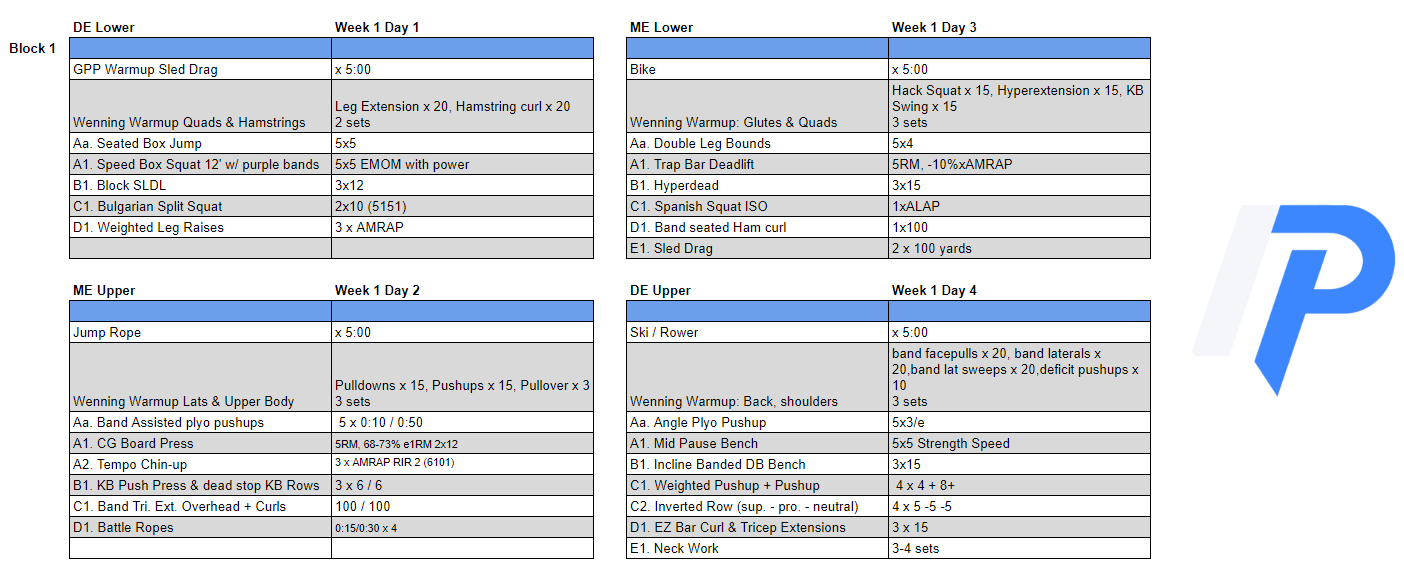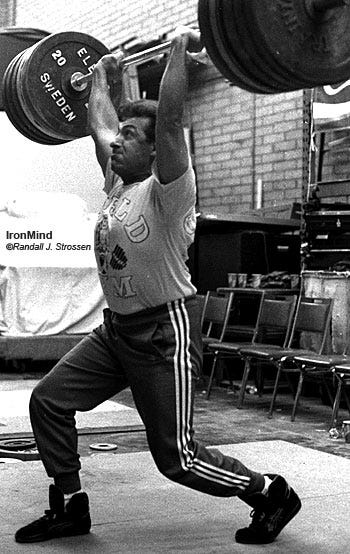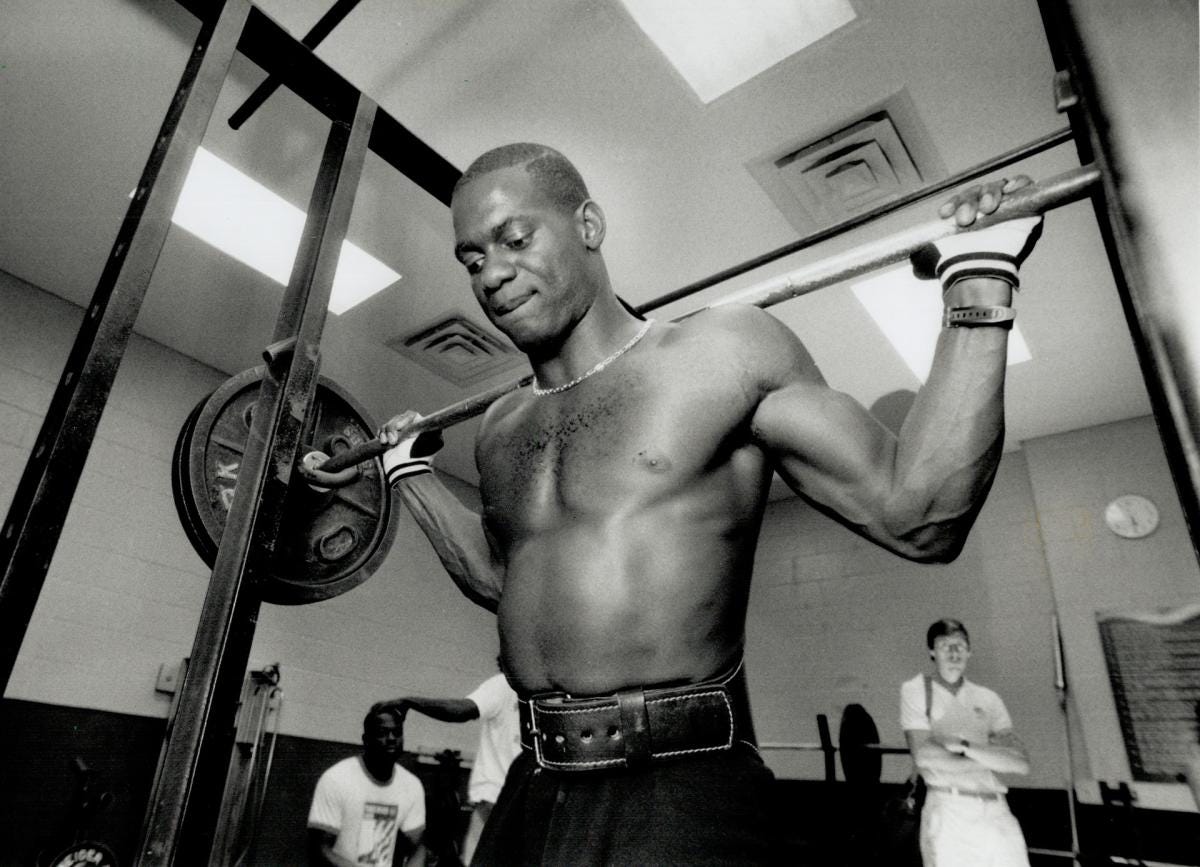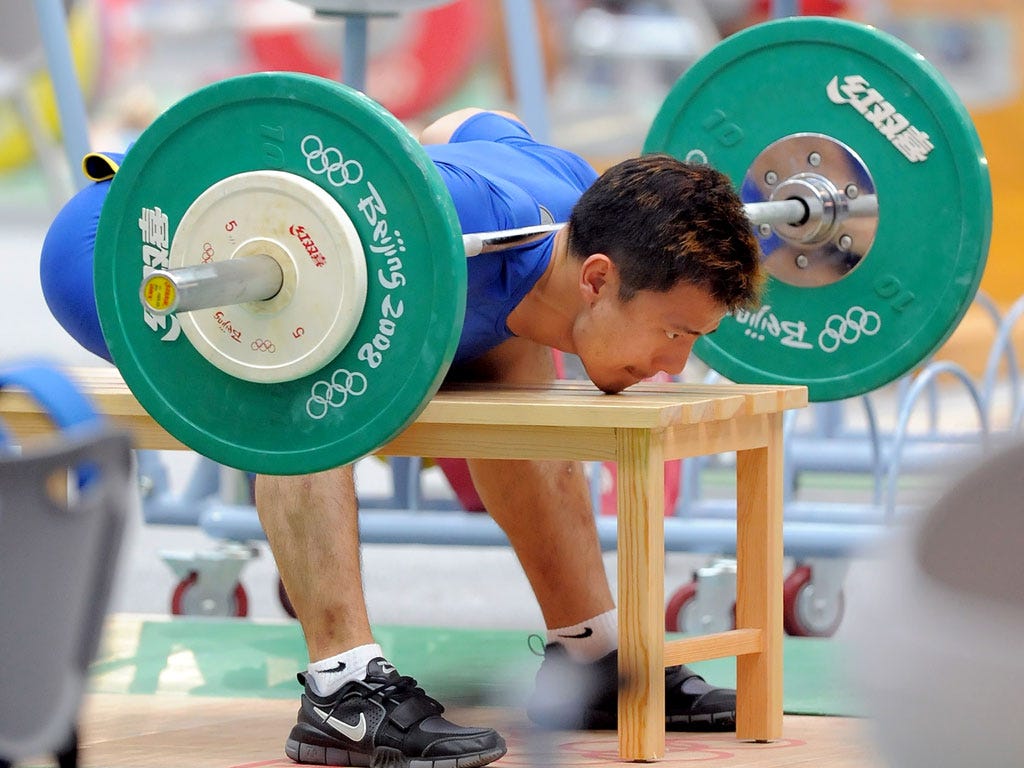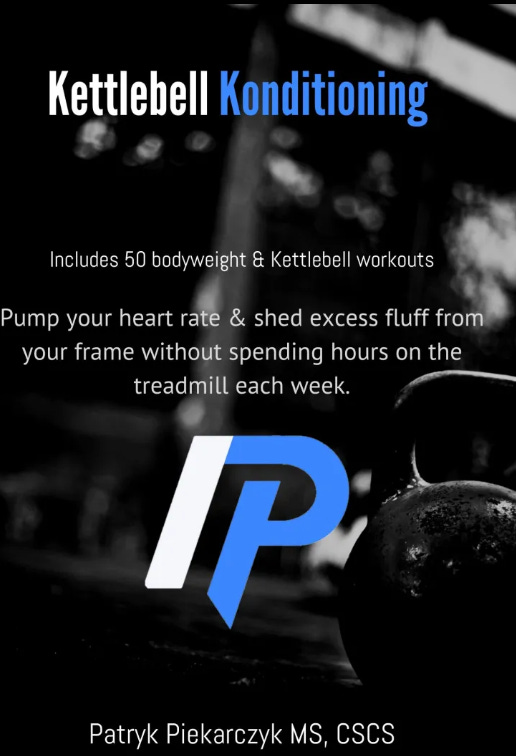Some of you have been asking questions about my training and I wanted to take this weekly series to dive into that more and discuss some concepts within my own programming. For context, i’m training for my first Muay Thai fight in June so i’m using a concurrent model of training. Meaning, i’m training multiple qualities simultaneously.
Below I have week one of my training. I’m working through some patellar tendonosis in my right knee so some of the lower body work has been modified until that improves. Typically when I load up the quads a bit more and add some foam rolling in it improves within a couple of weeks. In this 3 week block i’m primarily still pushing the aerobic base up before shifting into developing more aerobic power and anaerobic conditioning in the future blocks leading up to fight day.
Concurrent Training
Concurrent training usually synthesizes weight training and conditioning to provide a holistic training program that doesn’t just have one outcome. To some extent, most of my clients train this way. However there is less direct emphasis on improving conditioning beyond a baseline for most of them since they have highly specific competition goals (powerlifting for example) or are limited in training time and other qualities in their training take priority over direct conditioning.
The more basic and predictable your training is, the easier it is to recover from. In my opinion this is why eastern style periodization for olympic weightlifting was so effective. You did the same two lifts (snatch, clean & jerk), strength movements (Squats, Pulls), and likely only a couple assistance exercises for lower volume. This meant you could train more frequently and recover more predictably, especially if you were a high level athlete in a place like Bulgaria and your only job was to train.
When you mix more modes, movements, and variability in general into training, recovery becomes less predictable. This is why if anybody is concurrent training they should start with a very small dose and build their way up. If it’s your first time trying concurrent style training, probably don’t do multiple 5 mile runs, heavy squats, power exercises, and sprinting within the same week. Exercise is stress, it does you no good to induce stress you are unable to recover from.
Strategies For Effective & Injury Free Concurrent Training
Begin With Minimal Effective Volume (MEV)
This is especially true if you haven’t trained in this manner before. You won’t need much to move the needle. In general, we also need less volume than we think we do. Especially if the intent and intensity is adequate. You don’t need to be doing 3 mile runs at max intensity and 50 box jumps each lower body workout to develop power. Select a volume and intensity you for sure can handle and recover from and build from there.
Avoid No Mans Land
When you’re training for intensity, train intensely. When you’re training for volume or endurance, train at the other end of the spectrum. No mans land is when you train in a range that’s the worst for any extreme quality. For example, doing sets of 8 for both strength or endurance isn’t ideal. Perform sets of 12-20 for muscular endurance and sets of 3-5 for strength instead. This also holds true for speed or plyometrics. When you want to train for explosive power, you should move explosively. This means minimizing fatigue by taking longer rest intervals. Plyometrics and sprinting should NOT be used for conditioning.
Autoregulation & Relative Exertion
The training is already complicated enough since it’s integrating many aspects of fitness. When you mix in sport training ontop of it, recovery becomes more difficult and unpredictable. How will your legs feel for Monday squats after taking hard leg kicks in sparring Sunday? The answer from personal experience: not great. You’ll probably need to go lighter.
This is where using rep maxes, RIR, RPE, and autoregulation becomes especially important. Personally, I use 3 to 5 rep maxes for max effort days like Louie Simmons recommends for fighters and other athletes. This allows me to still train heavy on the days I need to while autoregulating based on fatigue.
Warmup Properly
Highly underrated tip. Most people have no clue how to warmup. They’ll just throw weight on the bar after walking into the gym and go. The warmup should be your guage for how the session will go. If weights move slow, either warmup longer or accept that you may need to adjust the weights down a bit that day. Dan Gable the legendary wrestler and coach talked about warming up for an hour and sometimes taking an extra hour if he was really sore, just so he could get a good training session.
Warmup Phases
Circulation Phase
Movement Phase
Activation Phase
Every warmup should include something at a low intensity that increases circulation. Preferably an aerobic activity like biking or rowing for example. This is going to sound super obvious, but everybody is screwing up here. The warmup is not a time to check out and think about your afternoon plans, your girlfriend, work, or what’s for dinner. During the circulation phase of the warmup take time to think about the training session: what would make it a good session? How can you make it better than the last one? How are you actually feeling today? Increasing circulation prior to training does more than just increase core temperature, it also increases circulation of enzymes and hormones that will help you produce energy more efficiently during your session. Do not skip this step.
After the circulation phase, I go through a movement prep phase to prepare joints for the activity i’m about to do. This can include movements to open up certain joint regions like the hips, joint prep with movements like squats or lunges for the knees, and any exercises that I found beneficial to increasing my mobility or injury resilience. Last but not least, is the activation phase. This phase usually incorporates a plyometric although you could add dynamic movements like kettlebell swings to the end of your movement prep and perform them as a circuit. Your heart rate should increase higher and in bursts during this phase to mimic high intensity activity.
At most, this entire warmup should take 10 minutes. If it takes you longer you’re either really out of shape or doing too much. It goes back to doing the minimal effective dose, only select exercises that benefit you most and in the volumes that get the job done for your goals.
Final Thoughts
Most people if their goal is health and longevity should adopt a concurrent model of training. This doesn’t mean you have to become a cardio bunny who lifts. It could mean doing aerobic work twice a week and lifting the other days with some mixed methods. If you have any questions let me know in the thread below.
Need some conditioning to spice up your training? I got you covered.




